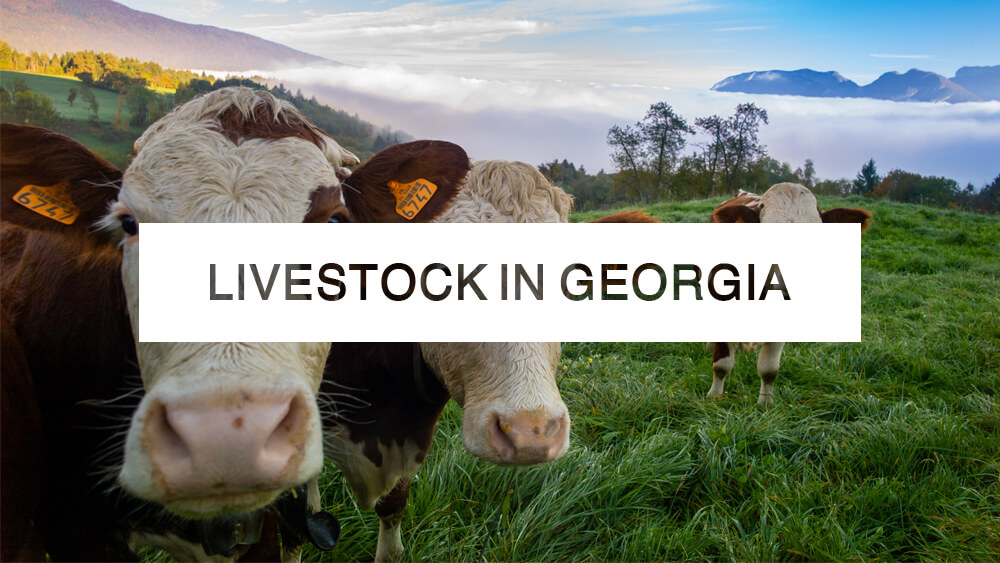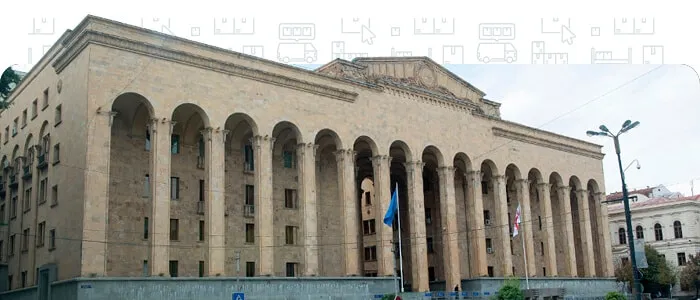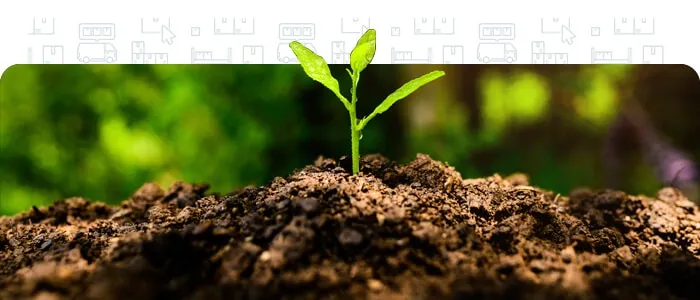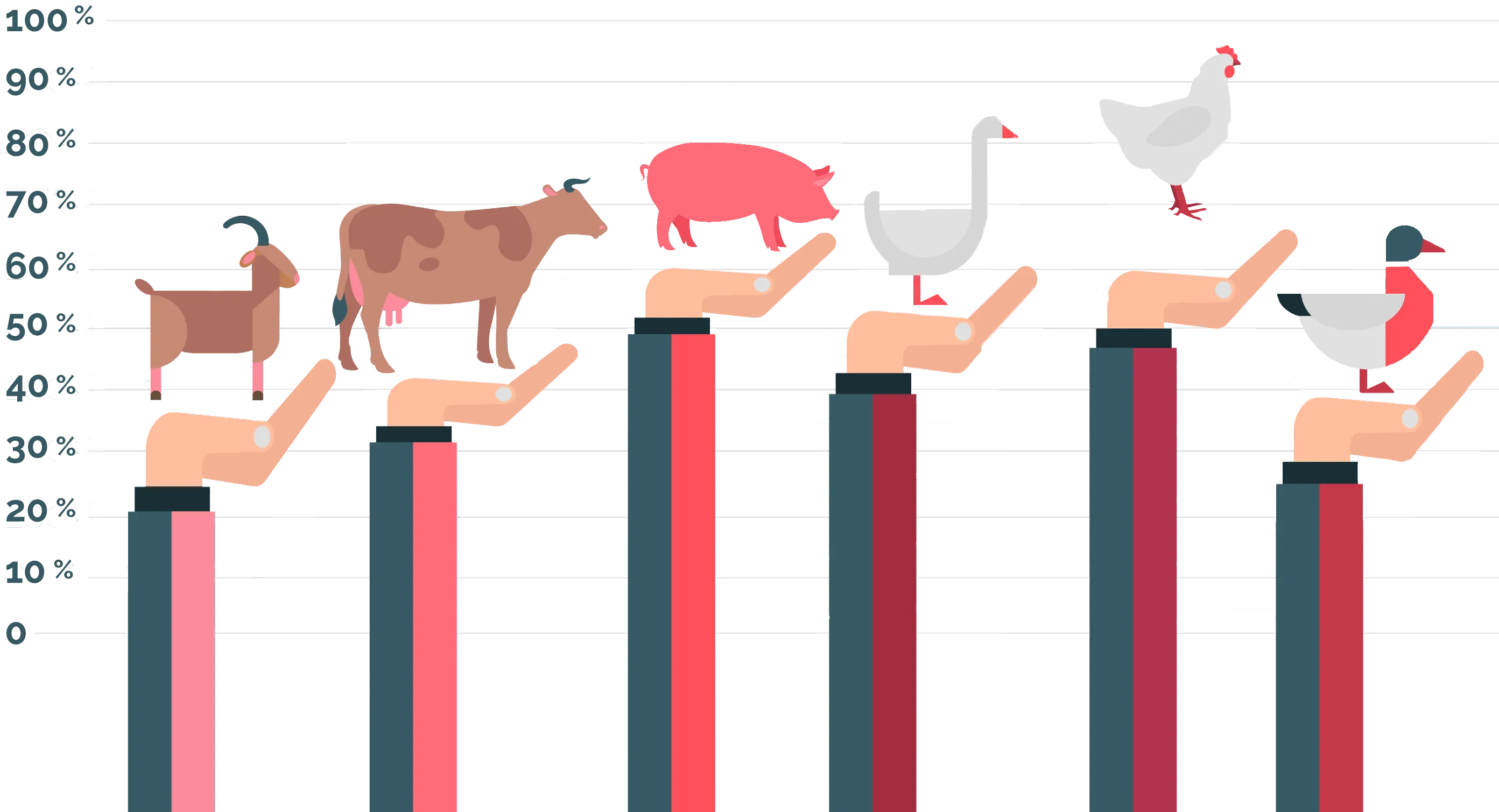
Livestock in Georgia
Livestock in Georgia is a growing industry that helps meet food needs and boosts the economy. The good climate, mild weather, and large pastures make Georgia a great place for raising animals. Farmers in Georgia raise cattle, sheep, goats, and pigs, producing meat, milk, and dairy products. This industry not only supports local needs but also contributes to exports and helps the country’s economy. With new technology and recent investments, livestock in Georgia is becoming more efficient and improving product quality. Understanding the current situation and potential in this sector shows its important role in Georgia’s future.
Podcast about animal husbandry in Georgia
About animal husbandry in Georgia
Investing in livestock is a successful and profitable option in Georgia. The good climate, plenty of water, large pastures, and cheap feed, along with government support like free land for investors, make this investment attractive. Additionally, easy access to modern machinery and cheap labor, along with a large local and international market and growing demand for animal products, make this sector a profitable and fast-growing investment. livestock is a key part of Georgia’s economy and supports many people in rural areas. The country’s green and abundant pastures are perfect for raising cattle, sheep, and goats. The products from this industry not only meet local needs but also become important exports for Georgia. Combining traditional and modern methods, the industry is moving towards sustainable growth and better economic results by keeping Georgia’s farming traditions while using new technologies.
Evaluate livestock in Georgia in one minute
The amount needed depends on land, type of animals, number of animals, needed infrastructure, equipment costs, and feed.
Most cities in Georgia have good climate conditions for livestock, but pastures outside big cities and in more rural areas are usually better.
Profitability depends on factors like animal type, number, operational costs (feed and maintenance), and product markets (meat, milk, wool). Overall, livestock is profitable in Georgia due to natural pastures and lower costs compared to some other countries.
Costs depend on farm size, number of animals, equipment used (ventilation, heating, lighting), and the farm’s location.
Topics that are reviewed on this page
Important points about animal husbandry in Georgia
Before starting, check the climate, land conditions, and access to resources like water and feed. Choosing the right area and understanding local and export markets can impact success.
Getting advice from local livestock and agriculture experts can help improve efficiency and reduce risks related to diseases and management. They are familiar with local challenges and solutions.
Knowing Georgia’s rules for livestock is important to avoid legal issues and keep product quality high.
Foreigners can’t own agricultural land in Georgia but can lease it. This is important for those planning to invest in livestock.
Advantages of livestock in Georgia
In this section we will look through some of the advantages of livestock in Georgia and ways which the government as well as business benefits will assist you throughout this journey. This information is especially crucial when trying to start your own agriculture and farming in Georgia country.

The support of the Georgian government
Government support for livestock in Georgia is very diverse. In the “Made in Georgia” project, which started in 2019, the government supports domestic production and attracts investors to the livestock industry by providing low-interest facilities, giving free land, tax exemptions for livestock industry projects, and providing temporary support packages. It is also possible to import agricultural and livestock industry machinery and tools from Europe and the U.S. without customs duty, which has reduced the investment costs in the livestock industry in Georgia.

The suitable nature of Georgia
More than 40% of the area of Georgia has the ability to grow agricultural products, raise livestock and water plants, and has uniform and wide rainfall, 22 regions with different climates and 4 seasons nature. The presence of green and vast plains, springs, rivers and high mountains provide special conditions for livestock industry in this country. There is no need to buy fodder in most areas to feed livestock due to suitable and acceptable vegetation. However, you should choose areas for livestock in Georgia that have more suitable vegetation than other areas.

Low cost of energy in Georgia
Energy costs are also one of the influential factors in the economization of livestock industry projects in Georgia. The cost of energy carriers (water, electricity and gas) in Georgia is lower than in European countries, and this reduces the cost of producing livestock and livestock industry products in Georgia and economically justifies the export of these products to the European Union. Gas consuming industrial units can negotiate with any of the gas distribution companies in Georgia and get the best price.
If you need advice! Fill out the form below
Our consultants will contact you as soon as possible
The price of industrial electricity in different regions of Georgia
| USD per kWh including 18% value added tax | Lari per kilowatt hour including 18% value added tax | Grouping | Area |
|---|---|---|---|
| 0.087 | 0.198 | 220/380 Volt | Tbilisi |
| 0.067 | 0.153 | 6 – 10 Kv | Tbilisi |
| 0.062 | 0.140 | 35 – 110 Kv | Tbilisi |
| 0.077 | 0.060 | 220/380 Volt | KAKHETI |
| 0.073 | 0.165 | 6 – 10 Kv | KAKHETI |
| 0.057 | 0.130 | 35 – 110 Kv | KAKHETI |
| 0.088 | 0.199 | 220/380 Volt | Other areas |
| 0.063 | 0.142 | 6 – 10 Kv | Other areas |
| 0.060 | 0.136 | 35 – 110 Kv | Other areas |
Consumers who consume more than one million kilowatt-hours of electricity per year can, by introducing themselves to the government, purchase electricity directly from commercial electricity distributors (ESCO) or from power plants that produce electricity widely across the country. They are buying at an agreed price.
The price of water in different regions of Georgia
| USD per cubic kilometer including 18% value added tax | Lari per cubic kilometer including 18% value added tax | Grouping | Area |
|---|---|---|---|
| 1.566 | 3.555 | Drinking water | Tbilisi |
| 0.372 | 0.845 | sewage system | Tbilisi |
| 1.487 | 3.375 | Drinking water | Other areas |
| 0.411 | 0.175 | sewage system | Other areas |
The price of gas for industrial use
| Lari per cubic kilometer including 18% value added tax | Lari per cubic kilometer including 18% value added tax | Distribution tariff |
|---|---|---|
| 0.008 | 0.018 | full of pressure |
| 0.027 | 0.062 | Medium pressure |
| 0.062 | 0.141 | low pressure |
Livestock markets in Georgia
In recent years, the livestock in Georgia has attracted the attention of many foreign investors. This industry includes production and breeding of meat and dairy animals such as cows, calves, pigs, sheep, goats and poultry such as chickens, turkeys, quails and ostriches. In Georgia, fans of chicken meat are the most numerous, and turkeys, quails and ostriches are bred for export to European markets. According to the export and import agreement with 0% tariff between Georgia and the European Union, excellent conditions have been provided for exporting and entering the European markets. In addition, in Georgia, due to the religious beliefs of Christians, the consumption of sheep meat is low, but due to the suitable market of the neighboring Muslim countries and the countries of the Persian Gulf, the breeding and export of sheep meat is also very popular.

Livestock investment opportunities in Georgia according to statistics
Despite the fact that Georgia has a lot of potential for livestock industry, most of the red and white meat it needs is imported. In the past years, 80% of chicken meat, 50% of pork and 25% of beef were imported. According to import statistics in 2019, more than 64 million dollars of chicken meat, 30 million dollars of pork, 14 million dollars of beef and 33 million dollars of fish were imported into Georgia from other countries.
In Georgia, per capita pork consumption is 7 kg per year and more than 50% of this amount is imported. According to the statistics, investing in the field of livestock in Georgia provides a guaranteed product sales market. Also, the lack of dairy cows and the decrease in milk production in Georgia have caused the price of raw milk to increase in this country compared to Europe, and this shows the high potential of investment in the field of dairy cattle breeding in Georgia.
Approximately 12% of Georgian people’s meat consumption is fish. For this reason, the cultivation of freshwater fish such as trout and salmon in Georgia is highly profitable and highly productive due to the presence of rich water resources.
FAQ about livestock in Georgia
The increase in the variety and needs of domestic and foreign target markets and the large import of white and red meat in Georgia guarantee the livestock products market.
Yes, the government supports investment in the livestock industry by providing low-interest facilities, free land transfers and tax-free livestock projects.
Energy costs in Georgia are very low compared to European countries, and this leads to a reduction in the cost of producing livestock products and the economic logic of exporting these products to Europe.
